How To Protect Your Cat During The H5N1 Avian Flu Outbreak
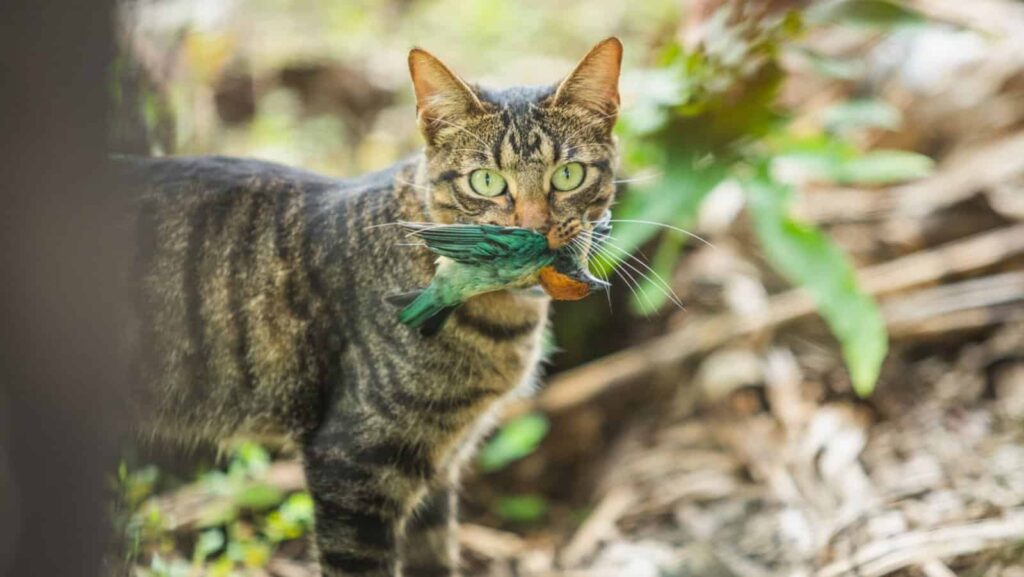
Photo: Rhys Logan via Shutterstock
The article “How to Protect Your Cat During the H5N1 Avian Flu Outbreak”, by Robin Jaffin appeared originally in The Queen Zone on January 3, 2025. It is reposted here with permission of the author.
As the highly pathogenic avian influenza (HPAI) H5N1 virus continues to spread among animals, pet owners are increasingly concerned about protecting their companions from infection. This comprehensive guide offers the latest information as of January 2025 on safeguarding cats against H5N1, including strategies for managing various pet living situations, recognizing early symptoms, and understanding how veterinary practices are responding to the outbreak.
We recommend checking the CDC website for updates regularly.
Understanding the Risk for Cats
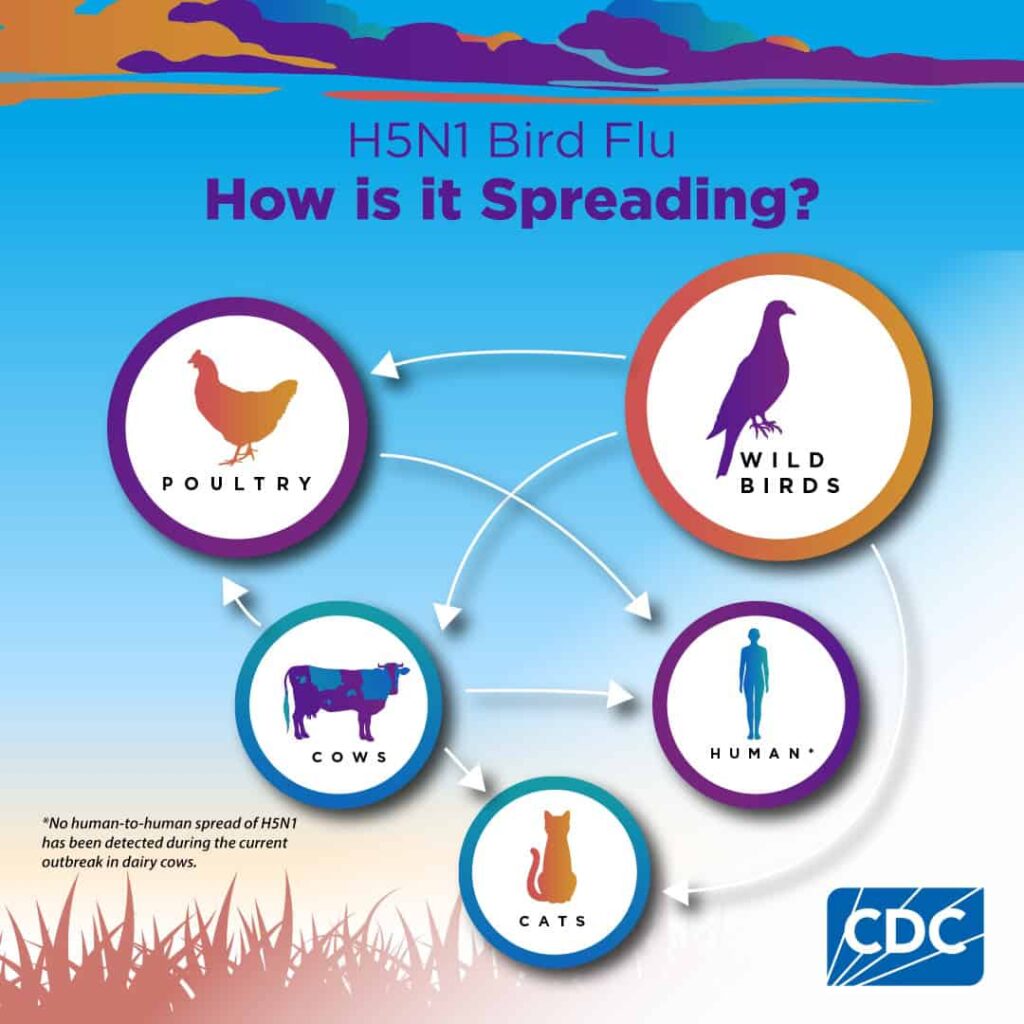
The H5N1 virus has shown a particular affinity for cats, with dozens of feline cases reported since March 2024. While dogs appear less susceptible, they are not immune to infection. The virus has affected barn and feral cats, indoor cats, and even big cats in zoos, sanctuaries, and the wild, highlighting the need for vigilance across all pet-owning scenarios.
Protecting Indoor Cats
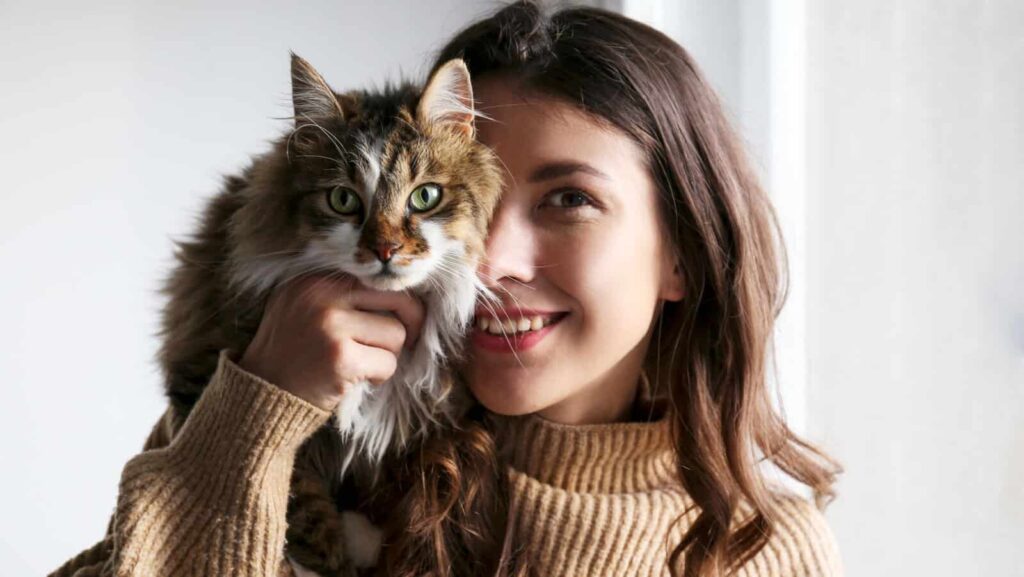
To protect indoor and outdoor cats from H5N1 avian influenza, pet owners should implement a range of preventive measures. For indoor cats, the primary focus is on limiting potential exposure to the virus. The American Veterinary Medical Associatio (AVMA) recommends keeping cats indoors as the most effective way to prevent infection. This approach significantly reduces the risk of contact with infected wild birds or contaminated environments.
For outdoor cats and those with indoor/outdoor access, additional precautions are necessary.
Owners should:
- Prevent cats from hunting or eating wild birds, as this is a primary route of transmission
- Keep cats away from areas where wild birds congregate, such as bird feeders or ponds
- Regularly clean and disinfect outdoor areas where cats spend time
- Consider creating enclosed outdoor spaces or “catios” to allow safe outdoor access
In areas with known H5N1 outbreaks, it may be prudent to temporarily restrict outdoor access for cats. If outdoor access is necessary, owners should monitor their cats closely and limit the duration of time spent outside.
Protecting Outdoor Cats
For cats living on farms or in rural areas with poultry, extra vigilance is required. These cats should be kept away from poultry houses, feed storage areas, and any locations where wild birds might gather. Farm cats should also be prevented from accessing areas where poultry carcasses or waste are disposed of, as these can be sources of viral contamination.
Owners of both indoor and outdoor cats should practice good hygiene:
- Wash hands thoroughly after handling cats, especially before eating or touching the face
- Change clothes and shoes after interacting with outdoor cats or potentially contaminated environments
- Consider wearing a mask when in close contact with a cat showing signs of illness
By implementing these measures, cat owners can significantly reduce the risk of H5N1 infection in their pets while still allowing for enriching lifestyles. Regular veterinary check-ups and staying informed about local H5N1 developments are also crucial components of protecting feline companions from this emerging threat.
H5N1 Symptoms in Pets
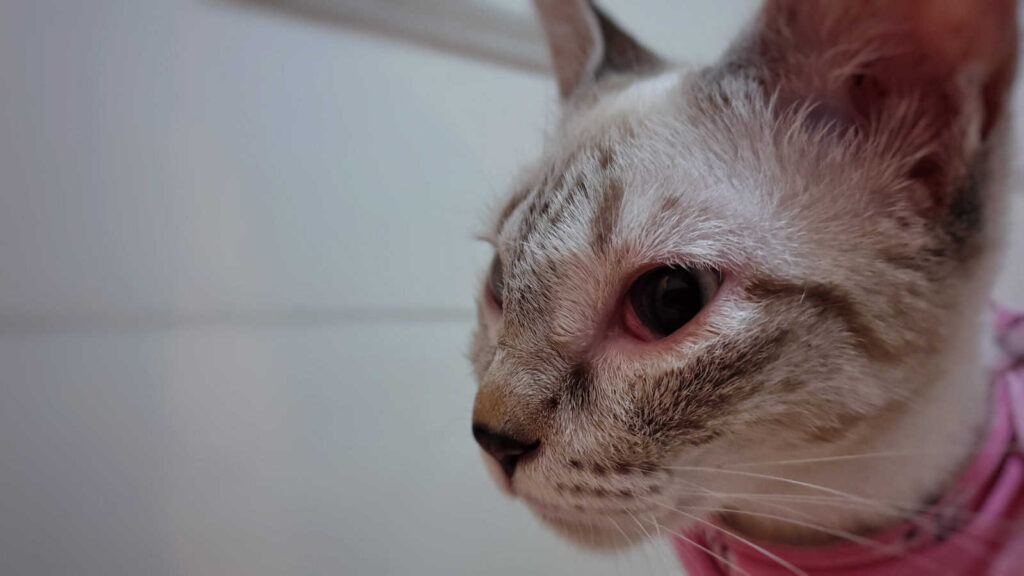
Recognizing the early symptoms of H5N1 avian influenza in pets, particularly cats, is crucial for prompt intervention and prevention of further spread.
While symptoms can vary, pet owners should be vigilant for the following signs:
- Fever
- Lethargy or unusual tiredness
- Decreased appetite
- Reddened or inflamed eyes
- Discharge from the eyes and nose
- Difficulty breathing or respiratory distress
- Neurological signs, such as tremors or seizures
It’s important to note that these symptoms can also be indicative of other illnesses, but in areas where H5N1 has been detected in birds or other animals, pet owners should be particularly alert.
Cats infected with H5N1 may show rapid onset of severe symptoms, often progressing quickly. In some cases, neurological signs may be the first or most prominent symptom, which can include:
- Disorientation
- Loss of coordination
- Seizures
- Behavioral changes
If a pet exhibits any of these symptoms, especially after potential exposure to wild birds or in areas with known H5N1 cases, immediate veterinary attention is crucial. Veterinarians are equipped to perform specific tests to diagnose H5N1 and can provide appropriate care and isolation measures if needed.
Pet owners should also be aware that some animals, particularly cats, may be able to carry and spread the virus without showing obvious symptoms. This underscores the importance of preventive measures, even for apparently healthy pets, in areas where H5N1 is a concern.
For pets living on farms or in rural areas with poultry, extra vigilance is necessary. These animals may be at higher risk due to increased exposure to potentially infected wild birds or poultry. Farm owners should monitor their pets closely and consider implementing stricter biosecurity measures to protect both livestock and companion animals.
Early detection and prompt veterinary care are key to managing H5N1 in pets. By familiarizing themselves with these symptoms and maintaining open communication with their veterinarians, pet owners can play a crucial role in protecting their animals and preventing the spread of this highly pathogenic virus.
Veterinary Practices for H5N1
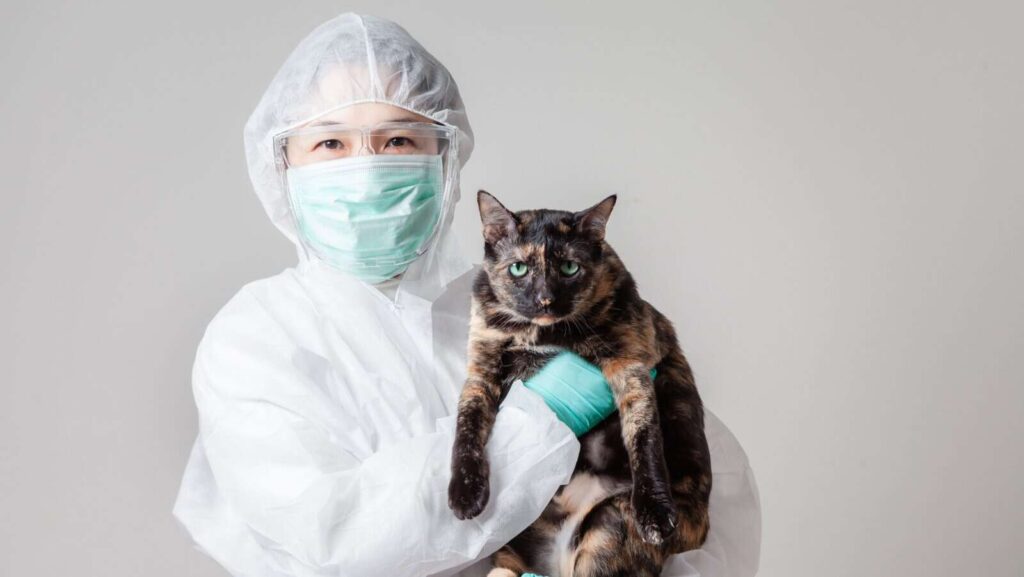
Veterinary practices are adapting their protocols to effectively manage the H5N1 avian influenza outbreak and protect both animal patients and human staff. The American Veterinary Medical Association (AVMA) has provided comprehensive guidance for veterinarians evaluating potential feline cases of H5N1.
Key measures implemented by veterinary clinics include:
- Enhanced biosecurity protocols: Clinics are implementing stricter cleaning and disinfection procedures, particularly in areas where potentially infected animals are examined or housed.
- Personal protective equipment (PPE): Veterinary staff are using appropriate PPE, including gloves, gowns, and respiratory protection, when handling suspected H5N1 cases.
- Isolation procedures: Suspected H5N1 cases are being isolated from other patients to prevent potential transmission within the clinic.
- Diagnostic testing: Veterinarians are working closely with state animal health officials and diagnostic laboratories to conduct appropriate testing for H5N1 in suspected cases.
- Staff health monitoring: Clinics are implementing protocols to monitor the health of veterinary staff who may have been exposed to suspected H5N1 cases.
- Client education: Veterinarians are providing information to pet owners about H5N1 risks, prevention strategies, and when to seek veterinary care.
- Telemedicine options: Some practices are offering telemedicine consultations for initial assessments of pets with mild symptoms, reducing the risk of potential exposure in clinic waiting rooms.
- Vaccination recommendations: While there is currently no approved vaccine for H5N1 in cats, veterinarians are emphasizing the importance of keeping pets up-to-date on other vaccinations to maintain overall health.
- Environmental controls: Clinics are improving ventilation systems and implementing air filtration measures to reduce the risk of airborne transmission.
- Waste management: Special protocols are being followed for the disposal of potentially contaminated materials and animal carcasses.
These measures aim to protect both animal and human health while ensuring that veterinary care remains accessible during the H5N1 outbreak. Pet owners are encouraged to contact their veterinarians promptly if they observe any concerning symptoms in their pets, particularly in areas where H5N1 has been detected in wildlife or domestic animals.
Safe Handling of Pet Supplies During H5N1 Outbreaks
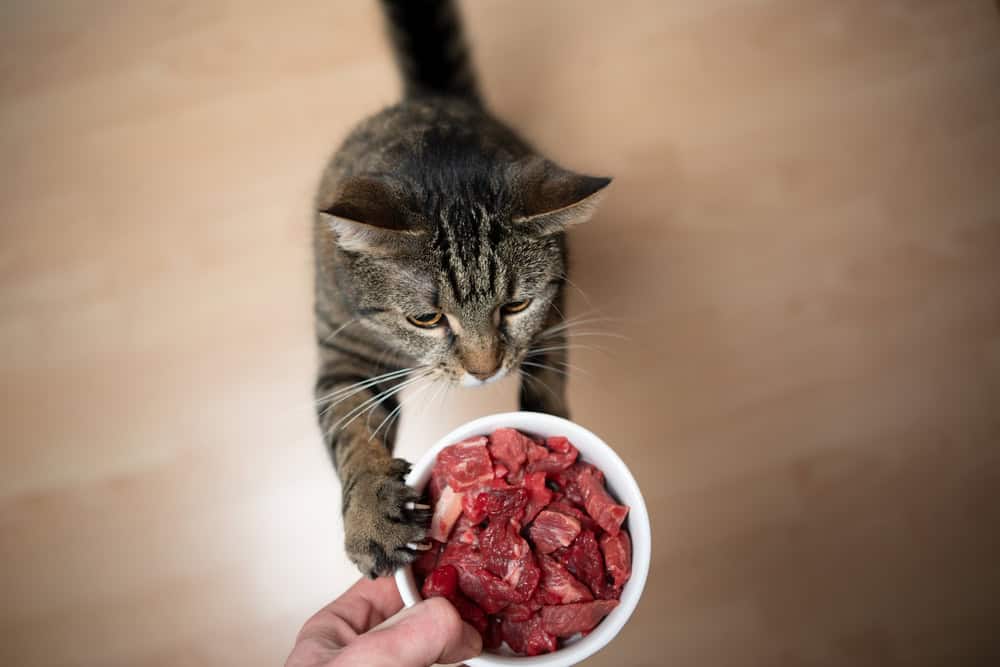
During H5N1 outbreaks, safe handling of pet supplies becomes crucial to prevent the spread of the virus. Pet owners should pay particular attention to food, toys, and bedding, as these items can potentially harbor the virus if contaminated.
Raw pet food has emerged as a significant concern in the context of H5N1. In December 2024, the U.S. Food and Drug Administration (FDA) issued guidelines emphasizing that cats should not be fed any products from affected farms that have not been thoroughly cooked or pasteurized to kill the virus.1 This recommendation came after H5N1 was detected in samples of raw pet food, with a confirmed case of a cat becoming infected after consuming such food.
To minimize risks associated with pet food:
- Avoid feeding pets raw or undercooked poultry products
- Choose commercial pet foods that have undergone proper heat treatment
- Store pet food in sealed containers to prevent potential contamination
- Wash food and water bowls daily with hot, soapy water
For pet toys and bedding:
- Regularly clean and disinfect toys, especially those used outdoors
- Wash pet bedding frequently, using hot water and detergent
- Consider temporarily removing fabric toys or bedding that cannot be easily cleaned during outbreaks
When handling pet supplies, owners should:
- Wear disposable gloves when cleaning items or handling potentially contaminated materials
- Wash hands thoroughly with soap and water after touching pet supplies
- Avoid touching face or mouth while handling pet items
In areas with reported H5N1 cases, the North Point Pets & Company recommends temporarily removing bird feeders and baths to reduce the risk of attracting potentially infected wild birds near pet areas.
For pets living on farms or in rural areas, additional precautions are necessary:
- Keep pet supplies separate from livestock areas
- Use dedicated clothing and footwear when handling pet items to avoid cross-contamination
- Regularly disinfect outdoor pet areas, especially those near poultry or wild bird habitats
By implementing these safe handling practices for pet supplies, owners can significantly reduce the risk of H5N1 transmission to their pets and themselves. It’s important to stay informed about local H5N1 developments and follow guidance from veterinary and public health authorities to adapt these practices as needed.
Handling Pet Waste Safely
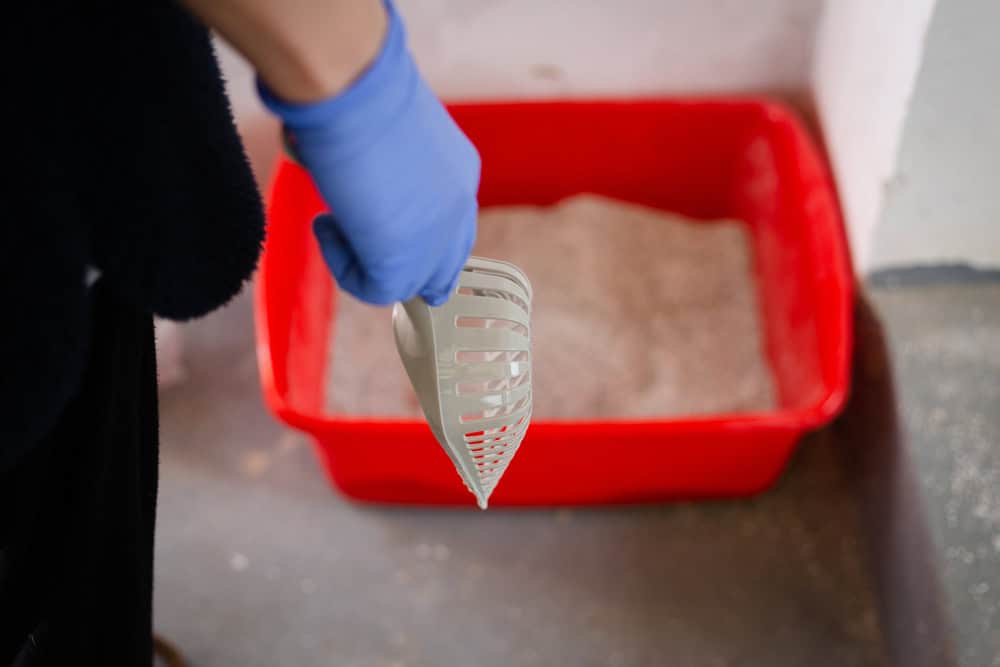
During H5N1 outbreaks, proper handling of pet waste is crucial to prevent potential virus spread. Pet owners should take extra precautions when cleaning litter boxes or picking up after their pets outdoors:
- Use disposable gloves when handling pet waste and dispose of them immediately after use
- Double-bag pet waste before disposing of it in covered trash cans
- Wash hands thoroughly with soap and water after handling pet waste or cleaning litter boxes
- Clean and disinfect litter boxes regularly using a freshly mixed chlorine solution (1/3 cup household bleach per 1 gallon of water)
- For outdoor pets, designate a specific area for waste elimination away from high-traffic areas and water sources
In areas with confirmed H5N1 cases, consider using disposable litter box liners and disposing of used litter more frequently. Avoid composting pet waste during outbreaks, as this could potentially spread the virus. Always follow local guidelines for pet waste disposal, especially on farms or in areas with poultry, as state regulations may have specific requirements for managing potentially contaminated materials.
Public Health and Pet Safety
The intersection of public health and pet safety is crucial when addressing the H5N1 avian influenza outbreak. While the risk of human infection from pets remains low, precautionary measures are essential to protect both animal and human health. Pet owners should be aware that close contact with infected animals, particularly cats, may pose a potential risk.
To minimize this risk, the Centers for Disease Control and Prevention (CDC) recommends limiting close contact with pets showing signs of illness, especially in areas where H5N1 has been detected in birds or other animals. If close contact is necessary, wearing a mask is advisable. Proper hygiene practices are paramount.
After interacting with pets, particularly those that have outdoor access or live in high-risk areas, individuals should:
- Thoroughly wash hands with soap and water
- Change clothes and shoes
- Wash any exposed skin
These precautions are especially important after handling sick or dead animals that may harbor the H5N1 virus.
For those living on farms or in areas with poultry, additional biosecurity measures are crucial. The United States Department of Agriculture (USDA) emphasizes that biosecurity is the best defense against the spread of H5N1. This includes:
- Restricting access to poultry areas
- Using dedicated clothing and footwear when working with poultry
- Properly disposing of dead birds and poultry waste
- Regularly cleaning and disinfecting equipment and vehicles
Veterinary practices play a vital role in public health by implementing infection prevention and control measures. These include proper testing procedures, staff health monitoring, and adherence to guidelines for handling suspected H5N1 cases4.Public awareness is key to preventing the spread of H5N1.
Pet owners should stay informed about local outbreaks and follow guidance from veterinary and public health authorities. Reporting unusual bird deaths or sick wildlife to local wildlife officials can help with early detection and containment of the virus.
While the focus is often on cats due to their susceptibility to H5N1, owners of other pets should also remain vigilant. Dogs, for instance, should be kept away from wild birds, poultry, and cattle, as well as their environments. Preventing pets from eating dead birds or other potentially infected animals is crucial in reducing transmission risks.
By adopting these public health measures and prioritizing pet safety, individuals can contribute significantly to controlling the spread of H5N1 and protecting both animal and human populations from this zoonotic threat.
H5N1 Bird Flu: What You Need to Know About the Human Threat

H5N1, commonly referred to as avian influenza or bird flu, is a highly pathogenic virus that primarily affects birds. However, it poses a significant danger to humans when zoonotic transmission occurs. The virus, first identified in geese in China in 1996, has since caused outbreaks worldwide, raising concerns about its potential to trigger a global pandemic. This explains the dangers H5N1 poses to humans, exploring how it is contracted, diagnosed, treated, and whether it has long-term health implications.
READ: H5N1 Bird Flu: What You Need to Know About the Human Threat
Robin Jaffin: As the co-founder and managing partner of the digital media partnership Shift Works Partners, LLC through two online media brands, FODMAP Everyday® and The Queen Zone she has played a pivotal role in promoting dietary solutions for individuals with specific needs in the health and wellness industry as well as amplify the voices and experiences of women worldwide. View all posts
